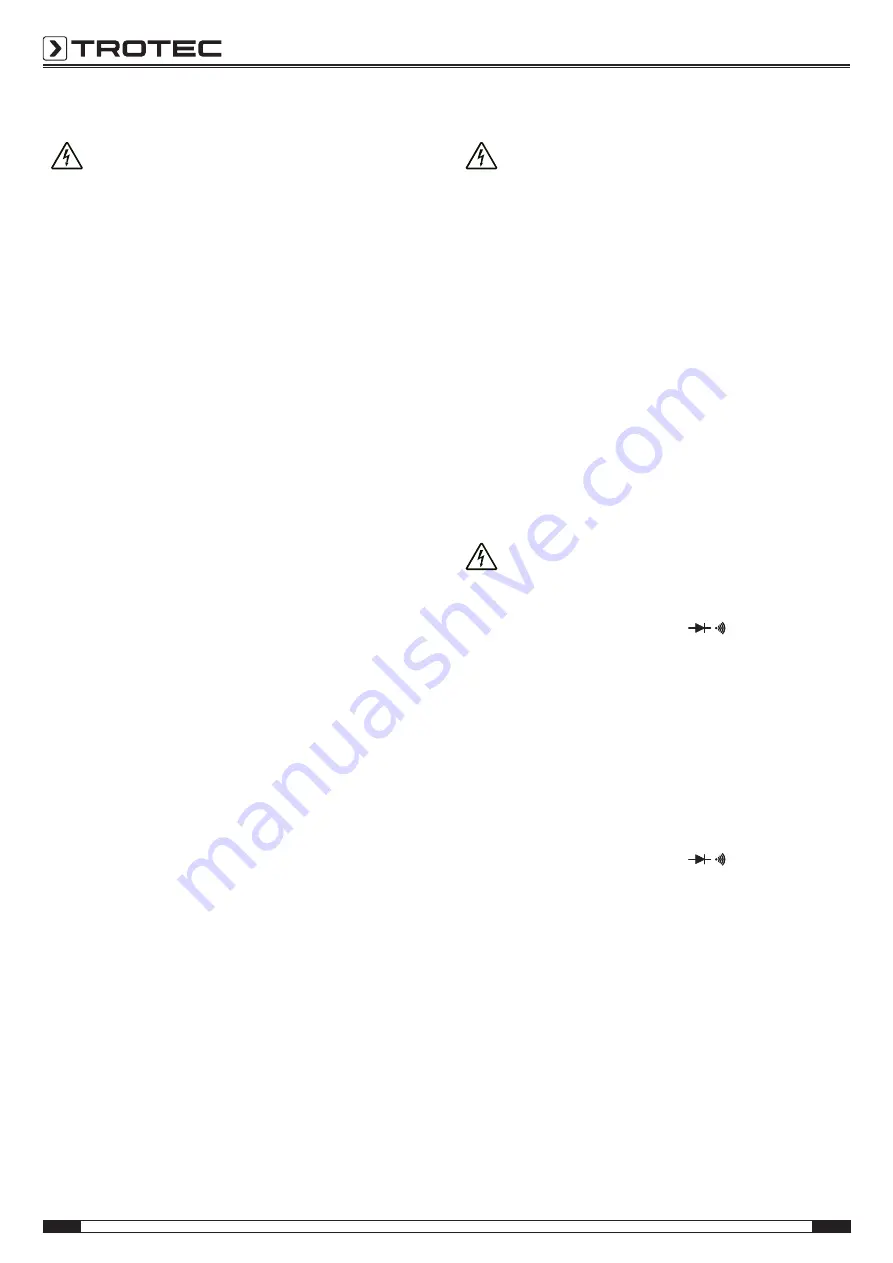
8
EN
multimeter BE47
Measuring direct current
Danger
Improper handling of the measuring device entails a
risk of electric shock!
Observe the following prior to every current measurement:
•
Before connecting a measuring device to an electric
circuit, cut off the circuit current. Discharge the capacitors.
•
For measuring the current, interrupt the circuit to be
checked and connect the measuring device in series with
the consumer in this circuit.
•
Never connect a voltage source to the multimeter's
measuring sockets when a current measuring range is
selected. The device can be damaged.
•
The voltage in the measuring circuit must not be higher
than 600 V (CAT III) to ground.
•
When measuring stronger currents from 400 mA in the
10 A range, the duration of a measurement must not
exceed 30 s. Otherwise, the device may be damaged due
to excessive heating.
1. Depending on the expected measuring current, select the
μA, mA or 10 A range using the rotary switch.
2. Insert the plug of the black measuring line into the COM
measuring socket and the plug of the red measuring line
into the mA or 10 A measuring socket, depending on the
selected range.
3. Switch off the voltage supply at the measuring object and
connect the measuring tips to the measuring object with
correct polarity (in series; red to plus, black to minus).
4. Switch the measuring circuit back on and read the
measured value from the display.
Note:
If you have selected the 10 A range for safety's sake, but the
measuring current is less than 400 mA, switch the measuring
circuit off again. Plug the red measuring line into the mA socket
and select a measuring range in the mA range. Switch the
measuring circuit back on.
Measuring resistance
Danger
Before carrying out resistance, continuity or diode
measurements, switch off the current of the electric
circuit and discharge all capacitors.
1. Select the largest resistance measuring range (Ω) using the
rotary switch.
2. Insert the plug of the red measuring line into the V/Ω/mA
measuring socket and the plug of the black measuring line
into the COM measuring socket.
3. Connect the measuring lines to the measuring object.
When measuring in the highest measuring range, the
measuring device may take some time to display a stable
value. This is due to the measuring principle and not a
malfunction.
ð
The measured value is shown on the display.
4. Turn the rotary switch to the position that is the closest to
the indicated value but does not fall below it.
ð
The measured value is shown on the display.
Continuity test
Danger
Before carrying out resistance, continuity or diode
measurements, switch off the current of the electric
circuit and discharge all capacitors.
1. Set the rotary switch to position
.
2. Insert the plug of the red measuring line into the V/Ω/mA
measuring socket and the plug of the black measuring line
into the COM measuring socket.
3. Connect the measuring lines to the circuit to be tested.
ð
When the circuit is closed and the resistance is smaller
than 30 Ω, an acoustic signal is emitted.
ð
When the circuit is open,
OL
is displayed.
Diode test
This function allows to check semiconductor paths for continuity
and blocking function.
1. Set the rotary switch to position
.
2. Insert the plug of the red measuring line into the V/Ω/mA
measuring socket and the plug of the black measuring line
into the COM measuring socket.
3. Connect the measuring lines to the diode.
ð
A measured value between 400 mV and 700 mV
indicates a forward direction of the diode.
ð
If the measured value is
1
, the diode is blocking.
ð
If
OL
is displayed with both polarities, the circuit is not
closed.
ð
Measured values near 0 V indicate a short circuit in the
circuit.




























